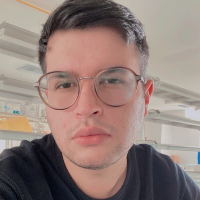Preprint
Article
Broad-spectrum Antimicrobial ZnMintPc Encapsulated in Magnetic-nanocomposites with Graphene Oxide/MWCNTs Based on Bimodal Action of Photodynamic and Photothermal Effect
Altmetrics
Downloads
274
Views
412
Comments
0
A peer-reviewed article of this preprint also exists.
supplementary.zip (8.84MB )


















This version is not peer-reviewed
Submitted:
31 December 2021
Posted:
05 January 2022
You are already at the latest version
Alerts
Abstract
Microbial diseases have been declared one of the main threats to humanity, which is why, in recent years, great interest has been generated in the development of nanocomposites with antimicrobial capacity. In the present work, two magnetic nanocomposites, based on Graphene Oxide (GO) and Multiwall Carbon Nanotubes (MWCNTs) were studied. The synthesis of these magnetic nanocomposites consisted of three phases: first, the synthesis of Iron Magnetic Nanoparticles (MNPs) was carried out in the presence of MWCNTs and GO using the Co-precipitation method. The second phase consisted of the adsorption of photosensitizer menthol-Zinc phthalocyanine (ZnMintPc) into MWCNTs and GO, and the third phase was the encapsulation in poly (N-vinylcaprolactam-co-poly(ethylene glycol diacrylate)) poly (VCL-co-PEGDA) polymer VCL/PEGDA a biocompatible hydrogel, in order to obtain the magnetic nanocomposites: VCL/PEGDA-MNPs-MWCNTs-ZnMintPc and VCL/PEGDA-MNPs-GO-ZnMintPc. In vitro studies were carried out using Escherichia coli and Staphylococcus aureus bacteria and the Candida albicans yeast based on the PTT/PDT effect. This research describes the optical, morphological, magnetic and photophysical characterizations of nanocomposites and their application as antimicrobial agents. It was evaluated the antimicrobial effect of magnetics nanocomposites based on the Photodynamic/Photothermal (PDT/PTT) effect; for this purpose, doses of 65 mW cm-2 at 630 nm of light were used. The VCL/PEGDA-MNPs-GO-ZnMintPc nanocomposite was able to eliminate colonies of E. coli and S. aureus, while VCL/PEGDA-MNPs-MWCNTs-ZnMintPc nanocomposite was able to eliminate the three types of microorganisms; consequently, the latter is considered a broad-spectrum of antimicrobial agent in PDT and PTT.
Keywords:
Subject: Biology and Life Sciences - Immunology and Microbiology
Copyright: This open access article is published under a Creative Commons CC BY 4.0 license, which permit the free download, distribution, and reuse, provided that the author and preprint are cited in any reuse.
MDPI Initiatives
Important Links
© 2024 MDPI (Basel, Switzerland) unless otherwise stated




